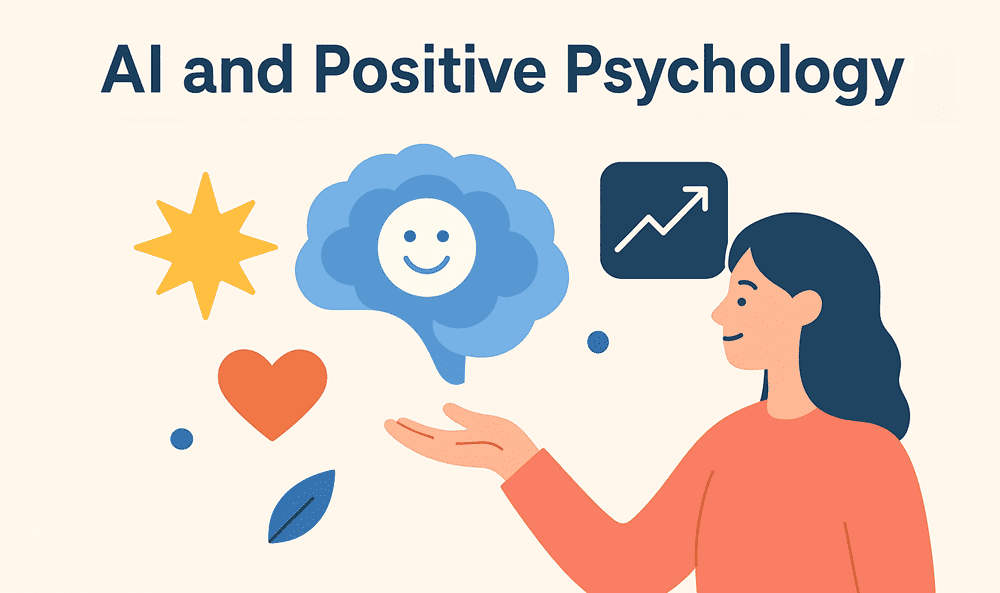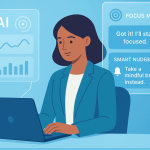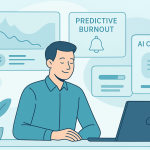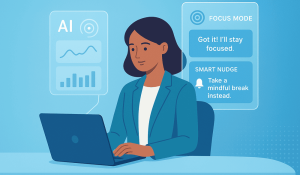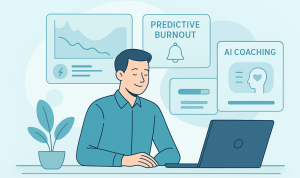In today’s evolving work environment, organisations are looking beyond productivity metrics and turning toward human-centred approaches. The concept of ai positive psychology offers a promising bridge between advanced technology and human flourishing at work. Utilised thoughtfully, it can support happier, more resilient teams and help business leaders deliver strong organisational outcomes.
Why positive psychology matters in the workplace
Positive psychology, focusing on strengths, wellbeing and flourishing has long been a part of organisational development. It emphasises factors like meaning, engagement, relationships and accomplishment rather than simply fixing problems. For example, research around Positive Psychological Capital shows strong links between employee wellbeing, satisfaction, and performance.
When leaders combine this mindset with purposeful interventions, progress shows in areas like retention, engagement and innovation.
How AI can support positive psychology
When deployed thoughtfully, AI doesn’t have to be just about automation or cost-cutting. It can complement human strengths and support positive psychological outcomes. Here’s how:
| Role of AI | Positive psychology benefit |
| Data-driven insights on employee mood, engagement patterns | Enables proactive interventions for wellbeing |
| Personalized feedback and coaching via algorithms | Supports strength-based coaching and builds resilience |
| Automation of routine tasks and workflows | Frees up time for human-led meaningful work |
| Real-time dashboards of wellbeing metrics | Lets leadership monitor trends and act through AI powered wellbeing dashboards |
For instance, a recent review found that when work design incorporates both AI tools and positive psychology frameworks (such as the PERMA model: Positive emotion, Engagement, Relationships, Meaning, Accomplishment), organisations can enhance employee psychological wellbeing with AI infusion.
Another survey of knowledge workers found that daily users of AI tools—termed “AI Advocates”—were about 31.5 % more satisfied in their jobs than less frequent users. Workplace Insight
These findings suggest that when AI aligns with human-centred design, it can support better outcomes for people—not just processes.
Key application areas for organisations
Here are several practical ways business owners and leaders can apply ai positive psychology in workplace settings:
1. Workplace gratitude AI
Gratitude is a powerful positive psychology intervention. Using AI tools to prompt, measure and nudge expressions of thanks across teams—such as recognizing contributions or highlighting peer-shout-outs—can build a culture of appreciation. Automating and tracking these interventions helps make gratitude a habit rather than a one-off.
2. Strength-based coaching
AI systems can help identify employees’ strengths (through assessments, behavioural data or self-report) and match people to roles or tasks where they can apply those strengths. Coupled with human coaching, this fosters development, engagement and meaning rather than simply plugging gaps.
3. Digital wellbeing training
With remote, hybrid and high-intensity work modes, digital wellbeing training powered by AI can personalise modules around stress, focus, recovery and social connection. For example, AI might suggest micro-breaks, mindfulness prompts or peer check-ins based on real-time workload patterns.
4. Positive intervention AI
These are AI-driven nudges, gamified prompts or micro-interventions that aim to increase wellbeing behaviours: gratitude journaling, strengths spotting, social recognition, resilience practices. Integrating such tools into daily workflows helps normalise positive psychological practices.
5. Employee happiness AI & resilience training AI
Measuring employee happiness via sentiment analysis, voice or text cues, or mood-tracking dashboards gives leadership an early signal on engagement, burnout risk or cultural drift. Paired with resilience training, companies can deliver just-in-time coaching, peer support or micro-learning to strengthen coping skills, adaptability and wellbeing.
Best practices for integrating AI + positive psychology
To make these interventions genuinely effective—and not just another tech rollout—leaders should keep the following guidelines in mind:
- Human-centred design: It’s not about replacing humans with machines. It’s about using AI to enable human flourishing. Studies caution that AI without human-centred framing can undermine wellbeing.
- Transparency and trust: Tools must be clear in purpose, respectful of privacy, and designed to build trust. Otherwise, employees may feel monitored rather than supported.
- Link to strategy and culture: These programs should connect to broader organisational goals—employee retention, engagement, culture—not just standalone tech. That’s where aligning with employee retention ai becomes meaningful.
- Blend tech with human support: AI nudges are helpful, but they should work alongside managers, coaches and peer networks—combining technology with human empathy and connection.
- Measure and iterate: Use wellbeing dashboards ai to monitor interventions’ impact (e.g., changes in engagement, turnover, wellbeing scores) and adjust accordingly.
- Training and skilling: AI tools introduce new ways of working; training in how to engage with them, reflect on results and co-create solutions is vital.
Addressing common leader concerns
Business owners frequently raise questions like:
- “Will AI replace human connection or introduce surveillance?”
If AI is implemented as a monitoring tool rather than a supportive one, it may undermine psychological safety. A study of German workers found no major negative impact of AI on wellbeing overall—but outcomes depended on how AI was introduced. - “Is measuring happiness or wellbeing too fuzzy?”
It can be, which is why focusing on concrete indicators (e.g., strengths use, recognition frequency, peer connection) anchored in positive psychology frameworks helps make it actionable. - “How do we embed this in everyday operations and not treat it as a side project?”
By integrating nudges, prompts, coaching and dashboards into regular workflows—rather than launching a one-time “wellbeing set piece”—organisations can normalise habits that support wellbeing. Aligning with leader resilience coaching helps build this into leadership practice. - “What if employees view it as ‘another gadget’ rather than a real cultural shift?”
The technology is only as good as the culture around it. Leadership behaviour matters. When leaders use and model tools (for example expressing gratitude, spotting strengths, using digital wellbeing prompts) that signals authenticity and fosters buy-in.
Real-world example snapshot
Imagine Company X, a global services firm with 5,000 employees across regions. They introduced an AI-enabled strengths-based platform that asks employees two weekly questions: “Which of my strengths did I use today?” and “Whom did I thank today and why?” Responses feed a dashboard visible to team leaders (non-identifiable data) where patterns of recognition, strengths use and peer connection show up.
Within six months:
- Peer recognition events increased by 37%.
- Engagement scores (measured via pulse survey) improved by 12%.
- Voluntary turnover dropped by 8% in targeted teams.
While this is only one illustration, it shows how coupling AI positive psychology interventions (gratitude prompts + strengths tracking + dashboard insights) with leadership emphasis can deliver meaningful impact.
Final thoughts
As corporate environments become more digitally oriented and fast-paced, the human dimension, connection, resilience, happiness remains critical. By integrating ai positive psychology into talent, culture and operations strategies, business owners can create workplaces where people flourish and outcomes follow.
When you focus on workplace gratitude ai, AI for wellbeing, and positive intervention ai, you are not only addressing wellbeing in a human way, but doing so with data, scalability and consistency. Embedding this into your broader corporate wellbeing AI framework, with links to employee retention ai, ai stress reduction, daily prompts via daily mindfulness AI, and robust wellbeing dashboards, sets a powerful foundation for modern, resilient organisations.

